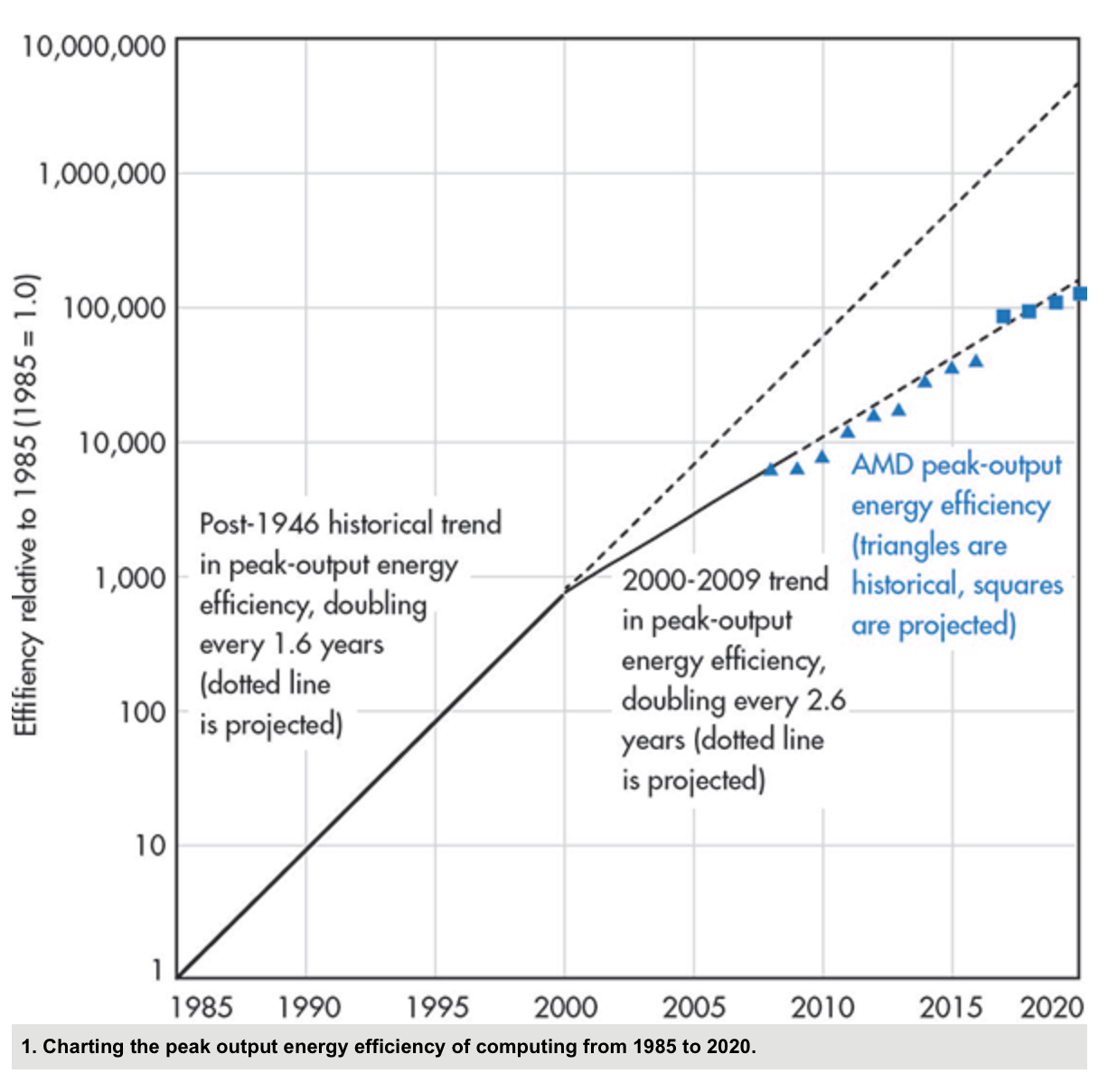Our latest on energy efficiency of computing over time, now out in Electronic Design
My colleague Sam Naffziger (AMD) and I just published our latest article titled “Energy efficiency of computing: What’s next?” in the magazine Electronic Design. Here’s the abstract, which didn’t make it into the actual online article:
Today’s computing systems operate at peak output a tiny fraction of the year, so peak output energy efficiency (which has slowed since the turn of the millennium) is not the most relevant efficiency metric for such devices. The more important question is whether computing efficiency in idle and standby modes (which are more representative of “typical use”) can be improved more rapidly than can peak output efficiency. This article demonstrates that in the past eight years, the answer to that question has been a resounding yes, and we expect those more rapid efficiency improvements for computers in typical use to continue for at least the next few years.
Our original work (2011) on efficiency trends showed the energy efficiency of computing had doubled every 1.6 years since the beginning of the computer age:
Koomey, Jonathan G., Stephen Berard, Marla Sanchez, and Henry Wong. 2011. “Implications of Historical Trends in The Electrical Efficiency of Computing.” IEEE Annals of the History of Computing. vol. 33, no. 3. July-September. pp. 46-54. [http://doi.ieeecomputersociety.org/10.1109/MAHC.2010.28]
In that work, I didn’t examine the post-2000 period in detail. When I re-analyzed the 2011 data, I found that peak output efficiency had slowed after 2000, with a doubling time of 2.6 years. That result makes sense, because Dennard scaling ended in 2000 or so. Figure 1 in our new article shows the effect of that change.

When AMD approached me with new data, I leapt at the chance to see what trends were implied in those data. As Figure 1 shows, their trend in peak output efficiency from 2008 to 2016 lies almost exactly on the trend I found in our 2011 data.
The key insight of the new article is that there are different measures of efficiency, and that a focus on peak output efficiency is not as appropriate for many types of computing devices (whose energy use is dominated by long periods of idle, standby, and sleep). We show that a focus on what we call “typical use” efficiency reveals more rapid improvements than are evident in peak-output efficiency in the 2008 to 2016 period, as shown in Figure 2.

This new article is an expanded look at the data we first put forth in IEEE Spectrum last year:
Koomey, Jonathan, and Samuel Naffziger. 2015. “Efficiency’s brief reprieve: Moore’s Law slowdown hits performance more than energy efficiency.” In IEEE Spectrum. April. [http://spectrum.ieee.org/computing/hardware/moores-law-might-be-slowing-down-but-not-energy-efficiency]
I summarize our latest work on computing efficiency here: http://www.analyticspress.com/computingefficiency.html
If you’d like a copy of the original 2011 article or the Electronic Design article with the related appendices, please email me. The full reference is:
Koomey, Jonathan, and Samuel Naffziger. 2016. “Energy efficiency of computing: What’s next?” In Electronic Design. November 28. [http://electronicdesign.com/microprocessors/energy-efficiency-computing-what-s-next]
